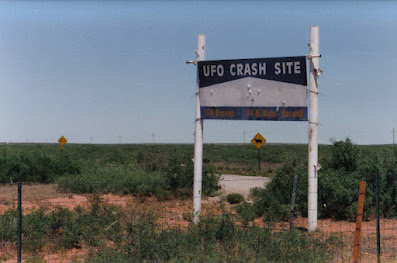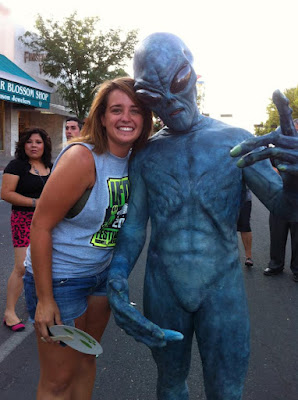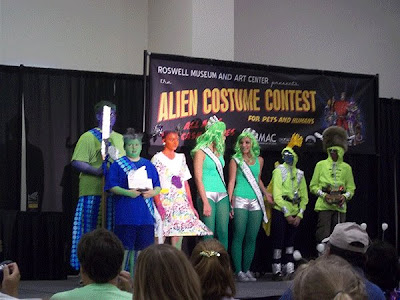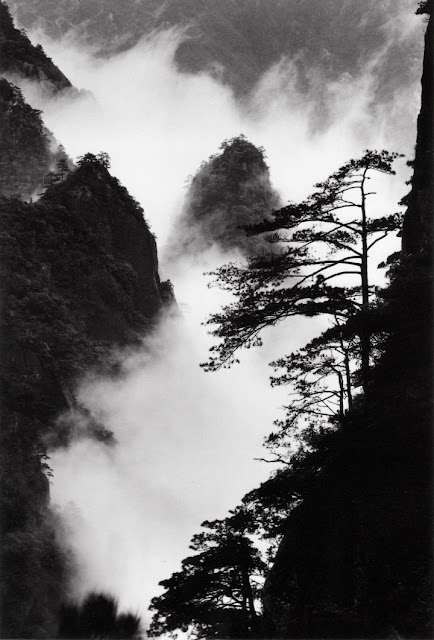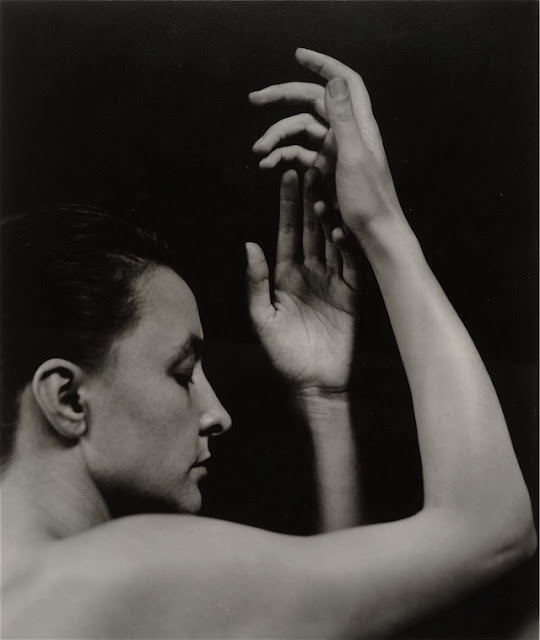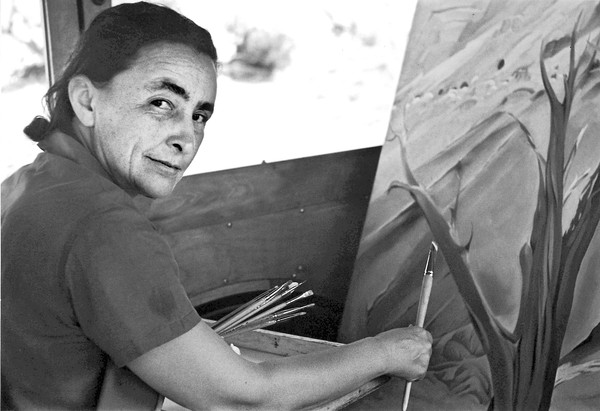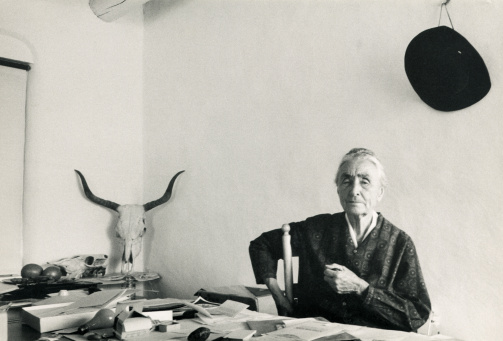Georgia O'Keeffe by Alfred Stieglitz, 1920
For several decades Georgia O'Keeffe
(1887-1986) was a major figure in American art who, remarkably,
maintained her
independence from shifting artistic trends. She painted prolifically,
and almost exclusively, the flowers, animal bones, and landscapes around
her studios in Lake George, New York, and New Mexico, and these
subjects became her signature images. She remained true to her own
unique artistic vision and created a highly individual style of
painting, which synthesized the formal language of modern European
abstraction and the subjects of traditional American pictorialism.
Georgia O'Keeffe at work by Anselm Adams, 1937
Her vision, which evolves during the first twenty years of her career,
continued to inform her later work and was based on finding the
essential, abstract forms in the subjects she painted. With
exceptionally keen powers of observation and great finesse with a
paintbrush, she recorded subtle nuances of color, shape, and light.
Subjects such as landscapes, flowers, and bones were explored in series,
or more accurately, in a series of series. Generally, she tested the
pictorial possibilities of each subject in a sequence of three or four
pictures produced in succession during a single year. But sometimes a
series extended over several years, or even decades, and resulted in as
many as a dozen variations.
Georgia O'Keeffe in Glen Canyon by Todd Webb, 1961
By the mid-1920s, after an initial period of experimentation with various
media, techniques, and imagery, O'Keeffe had already developed the
personal style of painting that would characterize her mature work.
During the 1930s she added an established repertory of color, forms, and
themes that reflected the influence of her visits to New Mexico. For
the most part, her work of the 1950s, 60s, and 70s relied on those
images already present in her art by the mid-1940s.
Artist Georgia OKeeffe with Judith Searle at her home studio
on the Ghost Ranch in Abiquiu,
New Mexico by Basil Langton, 1971
O'Keeffe's
flower paintings have often been called erotic, which is not exactly
wrong, but the emphasis is misplaced. It would be surprising if an
artist with her passion for the transcendent did not make use erotically
charged imagery. Reducing her flowers to symbols of female sexuality is
however, a trivializing mistake, for the sexual particulars matter less
in art with the aspiration that the vivid and more universal sensation
of a joyful release into another world beyond the usual distinctions.
O'Keeffe's interest in the scale of transcendence let her to violate
certain boundaries. Not only did she make the large small and the small
large, but she took serious chances with color, sometimes upsetting
conventions of visual harmony in order to startle the eye into new kinds
of seeing. She liked to stress visual edges that have metaphysical
implications: between night and day, earth and sky, life
and death. She was not afraid of the large, symbolic reverberation; her
bones often seem strangely alive, the flowers of the desert.
Artist Georgia OKeeffe at her home
on the Ghost Ranch in Abiquiu,
New Mexico by Basil Langton, 1971
Through
her repeated reworkings of familiar themes she produced an enormous
body of work that in intensely focused and unusually coherent. Some
1,000 paintings, an equal number of drawings and watercolors on paper,
and just a few sculptures, have been documented in a catalogue raisonne
of the artist's work published in 1999, and still others are unrecorded
because they were destroyed by the artist.
Georgia O'Keeffe at her home on the Ghost Ranch in Abiquiu,
New Mexico by Basil Langton, 1971
The
subjects O'Keeffe painted were taken from life and related either
generally or specifically to the places where she had been. Through her
art she explored the minute details of a setting's or an object's
physical appearance and thereby came to know it even better. Often her
pictures convey a highly subjective impression of an image, although it
is depicted in a straightforward and realistic manner. Such subjective
interpretations were frequently colored by important events in the
artist's personal and professional life. Their impact on her work was
often unconscious, as the artist
acknowledged late in life.
Georgia O'Keeffe at her home on the Ghost Ranch in Abiquiu, New Mexico by Basil Langton, 1971
Georgian
O'Keeffe continued to paint into the 1970s, her almost complete loss of
eyesight and ill health during the last fifteen years of her life
significantly curtailed her artistic productivity. Her eye problems
began in 1968, and by 1971 macular degeneration caused her to lose all
her central vision, leaving her,
eventually, with only some peripheral sight.
Georgia O'Keeffe by Philippe Halsman, 1967
Yet even during these waning years O'Keeffe remained true to the spirit
of her art through the life she led. For her, there had been fulfillment
in an existence that almost totally revolved around her art. It was,
after all, through painting that
O'Keeffe filtered all experience.
View from Georgia's studio at the Ghost Ranch in Abiquiu, New Mexico by Basil Langton, 1971
On
March 6, 1986 O'Keeffe died in St. Vincent's Hospital in Santa Fe,
having almost reached her goal of living to 100; she was 98 years old.
At her request, there was no funeral or memorial service, though her
ashes were scattered from the top of the Pedernal over the landscape she
had loved for more than half a century.
Georgia O'Keeffe Museum
217 Johnson Street
Santa Fe, New Mexico 87501
Article source here
Image sources: world wide web
